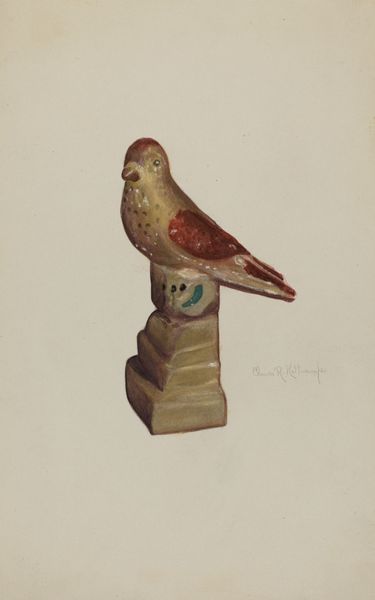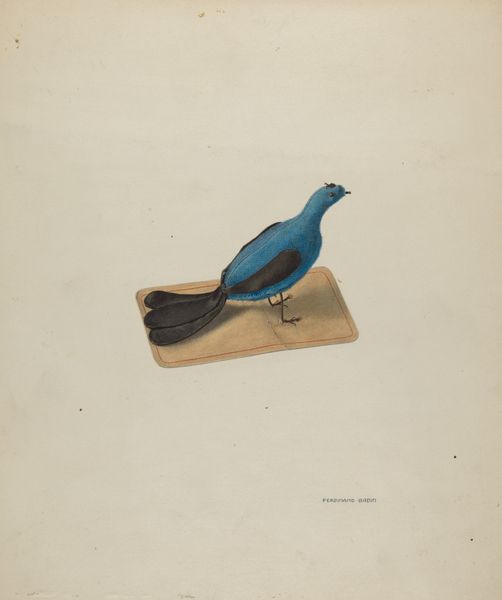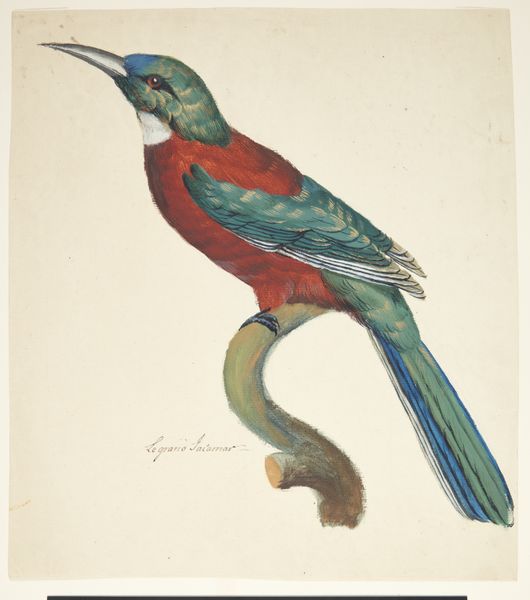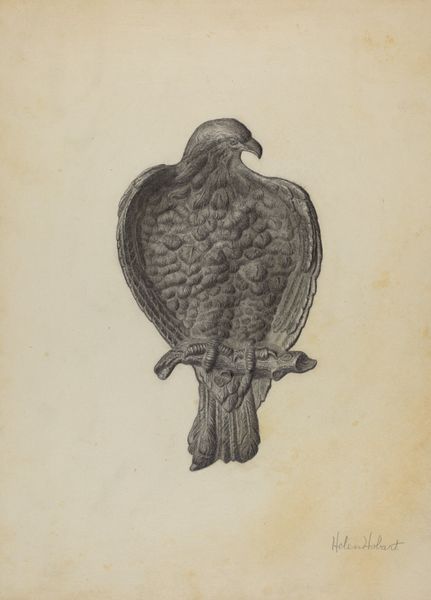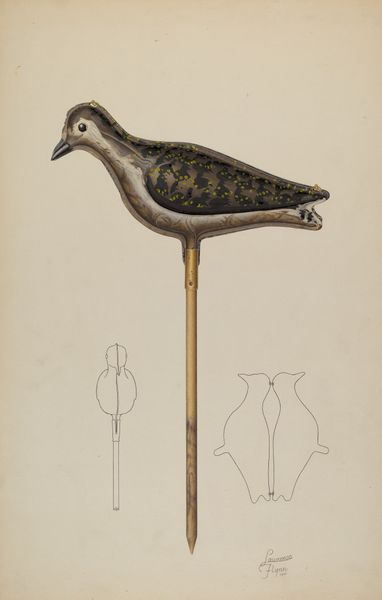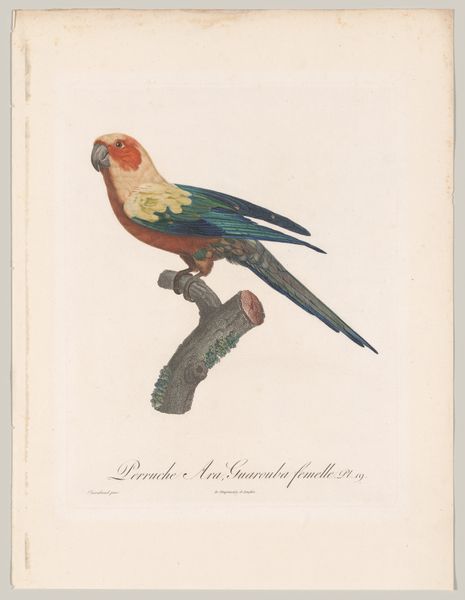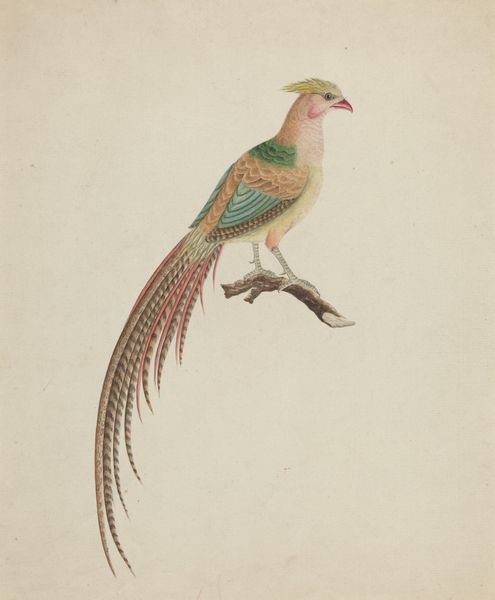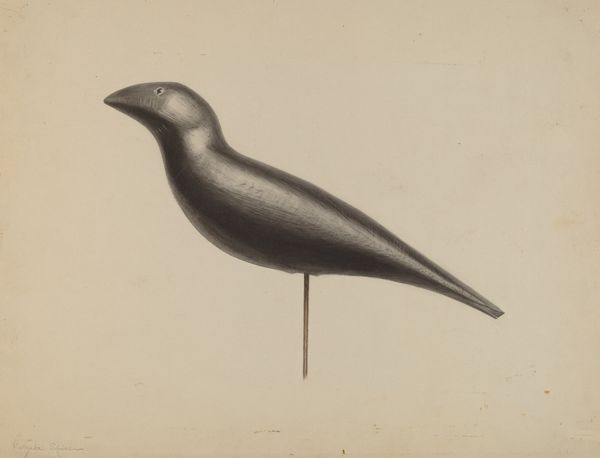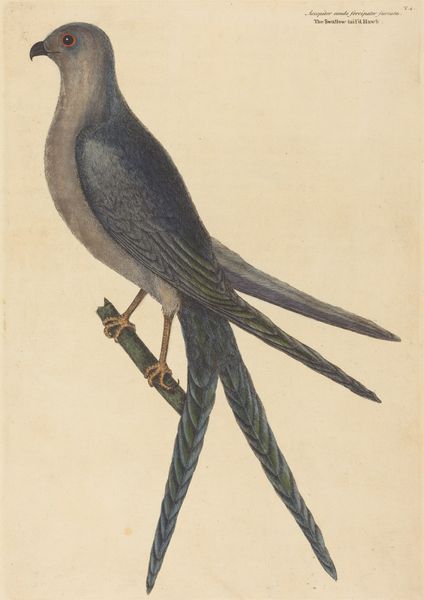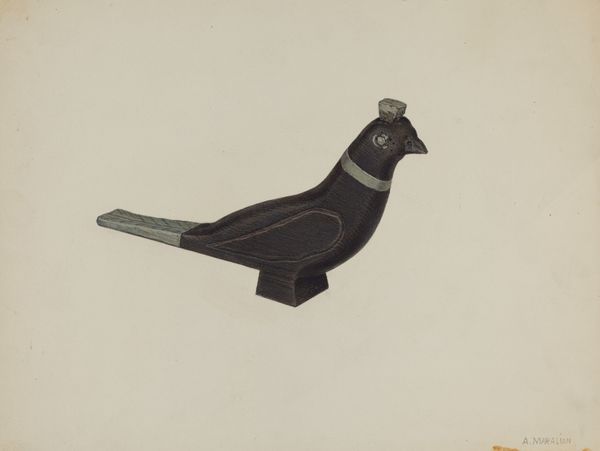
drawing, painting, watercolor
#
drawing
#
painting
#
watercolor
#
folk-art
#
watercolour illustration
Dimensions: overall: 28.6 x 22.8 cm (11 1/4 x 9 in.) Original IAD Object: 5 5/8" high
Copyright: National Gallery of Art: CC0 1.0
Curator: The melancholy of this piece really strikes me. This rendering of a Pa. German Toy Bird by Charles Garjian, dated around 1939, whispers of simpler times, maybe even forgotten joys. What do you think? Editor: It has the kind of flatness associated with folk art, or rather the deliberate techniques employed to mimic it. What's most interesting to me is the choice of watercolour and the implication of accessibility of the tools; readily available pigments, easily portable. It speaks to a democratic notion of art-making, doesn’t it? Curator: Absolutely, it hums with a humility that draws you in. I love the way Garjian uses watercolour; it's almost as though he's revealing the bird’s interior landscape with those strokes. The exposed innards are kind of grotesque, but with whimsy. There’s real vulnerability there. It feels like holding a fragile memory. Editor: The deliberate naivety you're sensing is crucial, but for me, it’s not so much about inherent vulnerability. It seems more tied to an appropriation of craft traditions and techniques. There's an interesting tension at play with a “toy” also referencing ideas around commodification and production, doesn’t it? Curator: It does! It also reminds me how something made simply—for play, even—can carry profound meaning. The colour choices feel almost symbolic, like they’re holding a secret language. Is there a certain kind of "realness" gained by taking up something deliberately flattened like folk art? Editor: Yes, and how its apparent artlessness allows an audience in precisely through what it rejects—or never had to begin with—in terms of "academic" modes of rendering. I keep coming back to watercolour—the decision to embrace a medium that resists polish and grandiosity. It speaks of resourcefulness but also a certain ethos about artmaking that, yes, challenges the supposed divide between high art and, well, not high art. Curator: It certainly brings a fresh perspective to ideas about craft. Thinking about it, this small watercolour isn’t just an image, it’s an experience, inviting a dialogue between us and the past, no? Editor: A carefully constructed experience—where every visible brushstroke and chosen medium makes its own compelling argument about production and what constitutes the work itself.
Comments
No comments
Be the first to comment and join the conversation on the ultimate creative platform.

